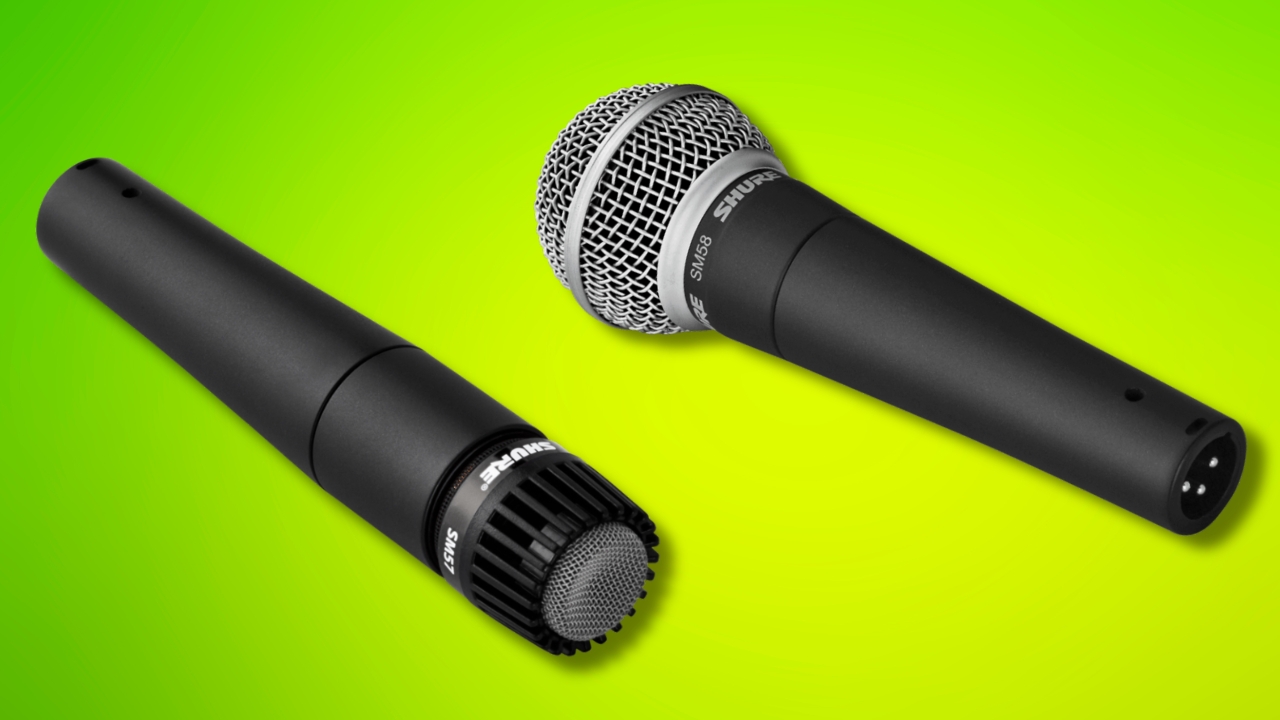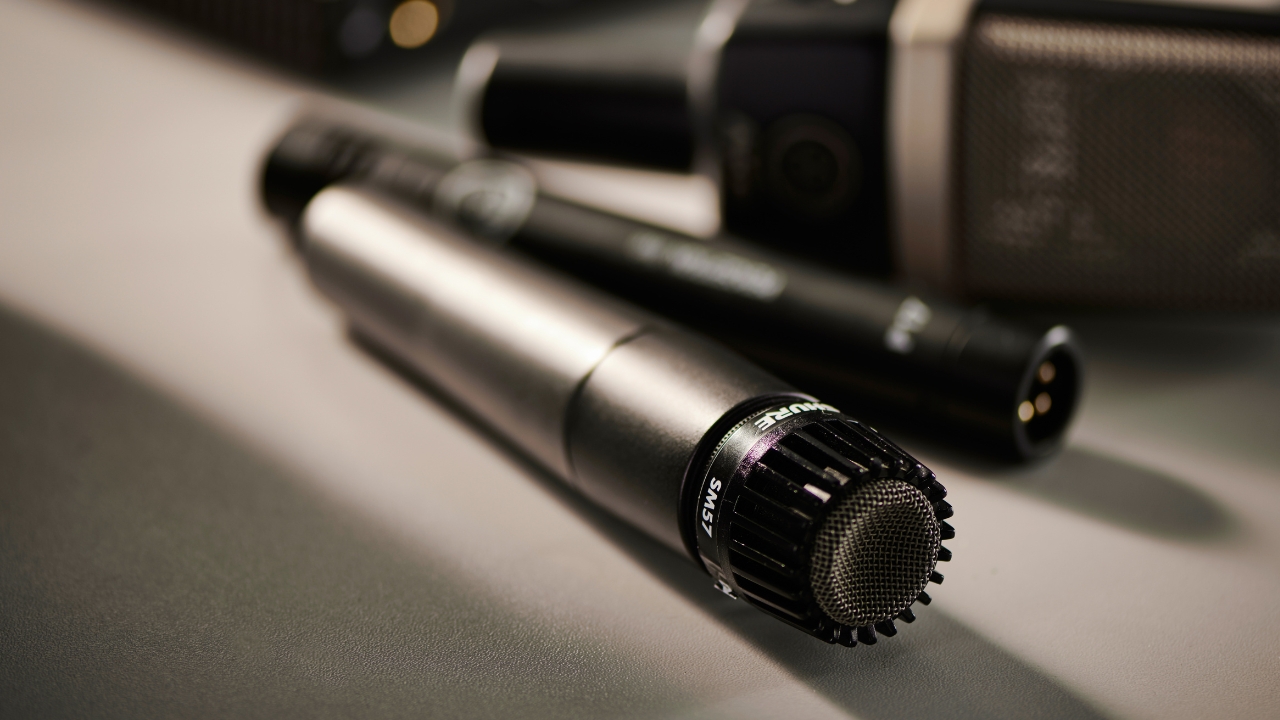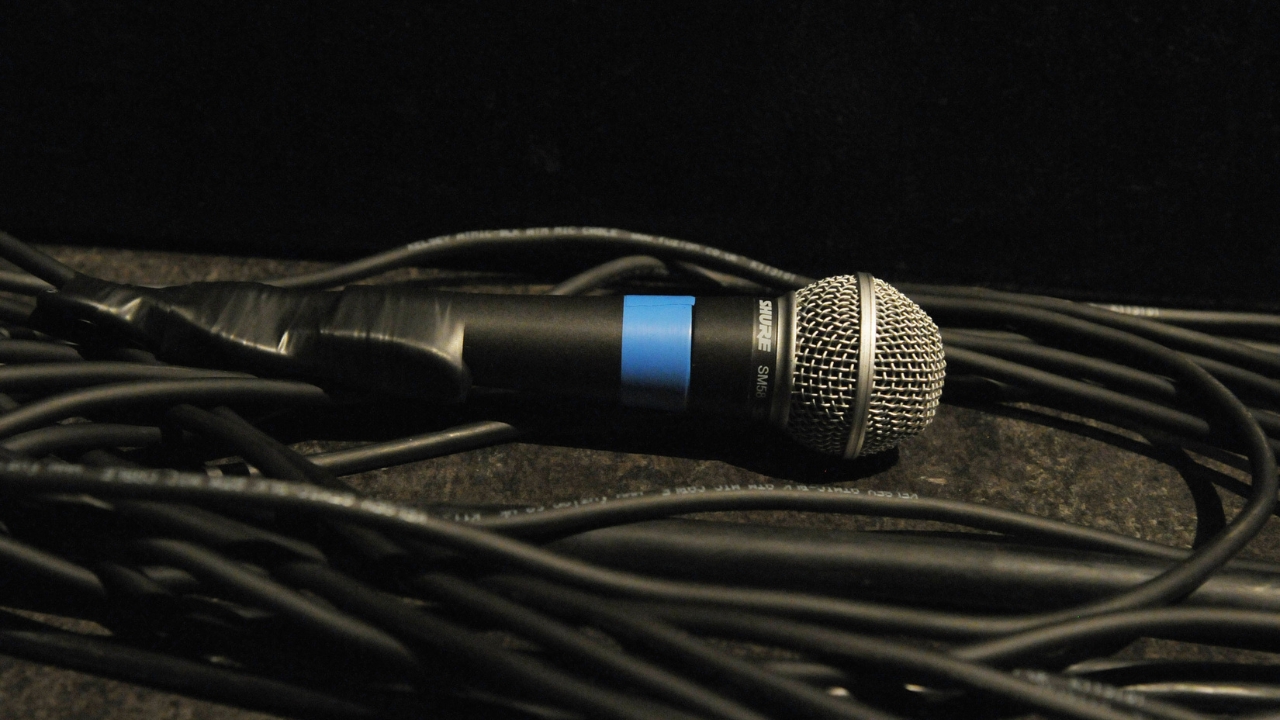SM57 vs SM58: which of these classic microphones should you pick?
We put two of the most popular microphones ever made head to head to find out which is best for your use case

Even if you’ve never heard of an SM57 or an SM58, you’ve almost certainly heard an SM57 or an SM58. As two of the world’s most popular dynamic microphones, each has appeared on countless recordings and at pretty much every live venue across the globe at one point or another. Whether it’s your local recording studio or the arena in your city center, you’ll find both of these mics hard at work thanks to their versatility and legendary build quality.
If you’re looking to pick up an SM57 or SM58, you may be wondering which you should go for. After all, they’re pretty much the same microphone just with a different grille right? Kind of. There’s a little more to it than that, so to help you decide which to go for we’ve opted to lay out all the pros and cons in one place, and hopefully help you cement your decision.
SM57 vs SM58: At a glance
Each microphone is based on the same cartridge, but they take an ever so slightly different approach to the grille design. The SM58 uses a ball grille to place the subject further away, which reduces the proximity effect and features a built-in pop shield to reduce the plosives you’ll get from vocals. Primarily the 58 will be used on live vocals, studio vocals, and sometimes public address systems
The SM57 meanwhile has a grille that is part of the cartridge which places the subject much closer, which gives you a more pronounced proximity effect and a slightly different frequency response. The SM57 is most likely to be found on guitar cabs, snare drums, brass, and pretty much any other instrument or amplifier.
Shure SM57
- Shure SM57 review
- Price: $99 / £119
- Type: Dynamic
- Polar pattern: Cardioid
- Frequency response: 40Hz-15kHz
- Output impedance: 150 ohms
- Weight: 0.63 lbs / 0.28 kg
- Contact: Shure
Shure SM58
- Shure SM58 review
- Price: $99 / £119
- Type: Dynamic
- Polar pattern: Cardioid
- Frequency response: 50Hz-15kHz
- Output impedance: 150 ohms
- Weight: 0.65 lbs / 0.24 kg
- Contact: Shure
Shure SM57 vs SM58: History

The history of both microphones starts with the Shure Unidyne that first appeared way back in 1937, designed by Benjamin Bauer. It was the first single-element directional microphone with a cardioid pickup pattern. Before the Unidyne microphones used an omnidirectional element with a bi-directional pickup pattern. This method resulted in microphones that were large, bulky, and very inconsistent in their performance.
The Unidyne was a revelation, providing excellent noise and feedback rejection. It was smaller and more predictable, making it immensely popular. It remained that way until 1960 when further advancements were made by Shure engineer Ernie Seeler resulting in the Unidyne III capsule.
This same capsule would later come to be used in the SM57 and its secret weapon was the pneumatic shock mount, which used hundreds of pages of mathematical equations to balance the diaphragm resonance, cartridge mass, resistance values, inertances, and cavity volumes to improve the performance of the microphone.
Want all the hottest music and gear news, reviews, deals, features and more, direct to your inbox? Sign up here.
It’s what enabled dynamic microphones to be used as handheld devices and forms the basis for nearly all dynamic mic designs today. In 1966 we got the SM58 design, which took the already existing SM57 and added the rounded grille, giving us the famous vocal mic that still performs across the globe.
Shure SM57 vs SM58: Build quality & design

Both mics are renowned for their outstanding ruggedness, and the running joke with either is that you only buy a new one to use it on something else. If you search online you’ll find many videos of people running them over with trucks, throwing them off buildings, hitting them with baseball bats, and even using them as makeshift spatulas. The end result is they still pass a signal when you get them back into the studio or onstage.
Whilst they’re ruggedly built, the capsule design does differ slightly on each. The SM57 features an integral resonator/grille, with the grille being part of the microphone capsule itself. As it’s designed to be placed close to instrumental sound sources where the proximity effect isn’t as much of an issue, this smaller capsule is a big part of what makes the SM57 so versatile. If you try and use one without the capsule, you’ll find it delivers a vastly different sound.
The SM58 meanwhile features a ball grille with a built-in pop filter, giving it a very different look from the 57. This pop filter consists of a thin foam inside the ball grille, which is very effective at reducing plosives even when the microphone is practically inside the singer's mouth. The ball grille plays a different role too, by keeping the sound source further away from the capsule, which reduces the proximity effect.
Winner: Some small differences aside, there’s no separating these two when it comes to ruggedness and design. They are inherently the same microphone capsule, with two different grilles for different tasks. We’re calling this one a draw.
Shure SM57 vs SM58: Usability

Both mics feature cardioid polar patterns, which means that the mic is sensitive in a head-on position, less so from the sides, and rejects noise from the rear. This polar pattern results in the rejection of ‘off-axis’ sounds and is what makes the SM57 so good for miking guitar cabs in both a live and studio scenario, as well as making it great for rejecting hi-hat noise when you use it on a snare drum.
It's also why the SM58 is favoured for live vocal performances, as you’re less likely to pick up other instruments during the performance, allowing for more gain at the desk. Of course, this doesn’t account for the singer pointing the mic directly at the wedge monitor, but it’s certainly a vast improvement on using any other type of mic polar pattern for this purpose.

Both mics also feature very high max SPL levels, which is the measure of how loud a sound source they can take before distorting. The SM57 has a max rating of 190dB, which is equivalent to a shotgun blast or rocket lift-off. This means it will handle any guitar amp with ease. The SM58 meanwhile has a max rating of 180 dB, which is far louder than any singer could possibly deliver, with the highest recorded human screams hitting around 120-130 dB.
With each mic, you’ll lose detail and potentially capture more room noise the further away you are from the source, so both are best used up close and personal. This does come down to personal taste, as you may want some of the room sound in your recording, or a bit of bleed to add some character to live performances.
Winner: There’s no separating the two here again, both polar patterns and max SPL ratings are similar, and both help each mic to excel at its particular purpose. They both perform admirably up close to the loudest sources and are excellent at rejecting off-axis noise, responding in similar ways when you back away from the mic.
Shure SM57 vs SM58: Sound

There are slightly differing frequency responses as a result of what each mic's intended use is. The SM58 has slightly less bass, going from 50Hz-15kHz whereas the SM57 features a little more bass response with a measurement of 40Hz-15kHz. They each cover a large part of the sound spectrum, as anything above or below this range would be difficult for a human ear to discern.
The slight decrease of the low end in the SM58 is an important part of what allows a singer to get close to the microphone without suffering from the proximity effect. At the other end of the scale, the SM58 features a presence boost around the 2-7 kHz mark, which enhances the clarity and allows the vocal to be heard clearly in a live scenario.
The SM57 meanwhile features an increased low-end response, which is part of what makes it so good at capturing the detail in instruments. This extra low end means that the SM57 isn’t as good at dealing with vocals, although the use of a pop shield and windshield can help cure that. There’s a similar presence boost with the 57 too, and although it’s a slightly smaller range going from around the 3-6 kHz region, it’s actually a slightly higher output around the 5 kHz mark versus the 58.
This means that the SM57 sounds a touch brighter overall, part of its attractiveness for use on instruments as it gives you more detail than the SM58. The bass boost on the 57 adds more weight to the overall sound and the frequency response makes it a bit more versatile than the SM58.
These characteristics are both a result of the grille design, if you were to remove the ball grille from the SM58 it would react similarly to the SM57 in terms of frequency response. We don't recommend doing this though, as even the pretty much invincible SM58 could suffer potential capsule damage this way.
Winner: We’re going to give it to the SM57 here. In a pinch, you can use the SM57 for vocals so long as you’re careful with your mic handling, and even though the extended frequency response and presence boost are slight, it makes it much more versatile than the SM58.
Shure SM57 vs SM58: Verdict

There’s really not that much separating these two microphones when it comes down to it. Both are fantastic mics to have in your locker and will serve you well for years to come thanks to their excellent build quality.
If you want a live vocal microphone, then it has to be the SM58 thanks to its bass attenuation and round grille with the built-in pop shield. It responds excellently during handheld use and with excellent noise rejection puts up well with being on a stage with other instruments.
If you’re recording instruments, then you’ll need the SM57 with its wider frequency response and slight presence boost delivering excellent detail from instruments. Most studios will have a bunch of these on hand, as it’s such a versatile microphone you can use them on pretty much anything, vocals included.
Ideally, if you’re recording sounds in the studio or live, it’s nice to have both on hand. As relatively inexpensive microphones, a pair isn’t out of reach for most musicians and as is usually the case, you’ll find yourself wanting more once you’ve used them!

Matt is a Junior Deals Writer here at MusicRadar. He regularly tests and reviews music gear with a focus on audio interfaces, studio headphones, studio monitors, and pretty much anything else recording-related. Matt worked in music retail for 5 years at Dawsons Music and Northwest Guitars and has written for various music sites including Guitar World, Guitar Player, Guitar.com, Ultimate Guitar, and Thomann’s t.blog. A regularly gigging guitarist with over 20 years of experience playing live and producing bands, he's also an alumnus of Spirit Studios, where he studied studio engineering and music production.